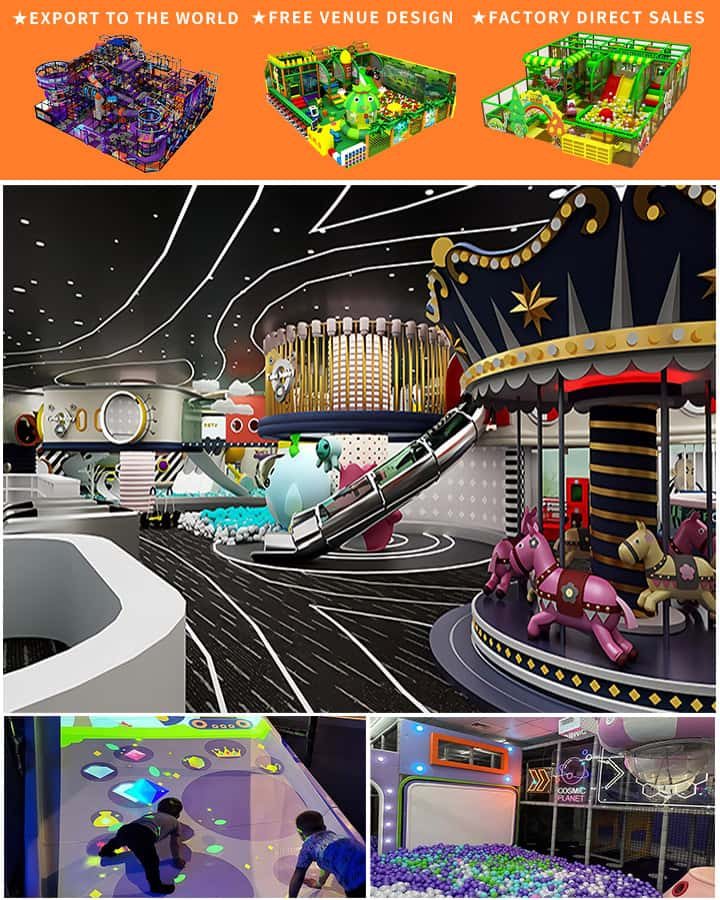Playgrounds are havens of fun and excitement for children, offering endless opportunities for physical activity and creative play. The variety of playground equipment available ensures there’s something for every child to enjoy, whether they prefer swinging high in the sky or navigating obstacle courses. Here, we present a comprehensive list of popular playground equipment names, each contributing to the delight of children around the world.
1. Swings
Swings are perhaps the most iconic piece of playground equipment. They come in various types, including:
- Traditional Swings: Hanging from sturdy frames with chains or ropes.
- Belt Swings: Designed for safety with a harness that secures the child.
- Infant Swings: Equipped with molded seats to provide extra support for younger children.
2. Slides
Slides offer exhilarating descents and come in many forms:
- Standalone Slides: Free-standing structures often found on residential properties.
- Slide Sets: Part of larger playground setups, sometimes combined with ladders or climbing features.
- Spiral Slides: Adding a twist to the traditional straight slide, these spiral designs offer a more exciting ride.
3. Seesaws
Seesaws promote cooperative play and balance:
- Tetherball Seesaws: Allowing children to sit at either end and bounce up and down while trying not to touch the ground.
- Bench Seesaws: Longer versions that can accommodate two children at one time.

4. Merry-Go-Rounds
A classic staple of community playgrounds, merry-go-rounds provide both exercise and joy:
- Traditional Merry-Go-Rounds: Spinning platforms powered by children pushing the ground with their feet.
- Spring Merry-Go-Rounds: Using spring mechanisms to create rotational motion.
5. Climbing Structures
Encouraging physical challenges and imaginative play, climbing structures come in numerous designs:
- Climbing Walls: Often made of textured plastic or wood, providing grip and stability.
- Rock Climbers: Simulating real rock formations, perfect for budding adventurers.
- Jungle Gyms: Complex structures offering multiple levels and paths to explore, complete with ladders and rope bridges.
6. Balance Beams and Timber Trails
These elements help develop coordination and balance:
- Balance Beams: Straight or curved beams suspended off the ground, requiring steady steps to traverse.
- Timber Trails: Series of connected logs or stepping stones set at varying heights, adding an element of unpredictability and challenge.
7. Sandbox and Water Tables
Promoting sensory exploration and fine motor skills:
- Sandboxes: Filled with sand, allowing children to build castles, dig, and sculpt.
- Water Tables: Often featuring spinning wheels, water spouts, and floating toys, encouraging interactive play with water.
8. Spring Riders
Adding an active, bouncing component to any playground:
- Horse Springs: Mold-shaped spring riders that simulate horseback riding.
- Animal Springers: Designed as various animals, providing both fun and gentle exercise.
9. Zip Lines
For the thrill-seekers, zip lines offer high-energy fun:
- Single Zip Lines: Solo rides across the playground.
- Double Zip Lines: Allowing friends to race side by side.
10. Obstacle Courses
Challenging both mind and body, obstacle courses include:
- Tunnels and Crawl Spaces: Navigating through small spaces enhances agility.
- Jumping Platforms: Requiring precision and strength.
- Balance Logs: Walking across narrow logs tests balance and concentration.
In conclusion, playground equipment offers a diverse range of activities that cater to different interests and abilities. From the simple pleasure of swinging to the complex coordination required for obstacle courses, each piece of equipment brings its unique joy and developmental benefits. The next time you visit a playground, take a moment to appreciate the myriad ways these structures contribute to childhood happiness and growth.




